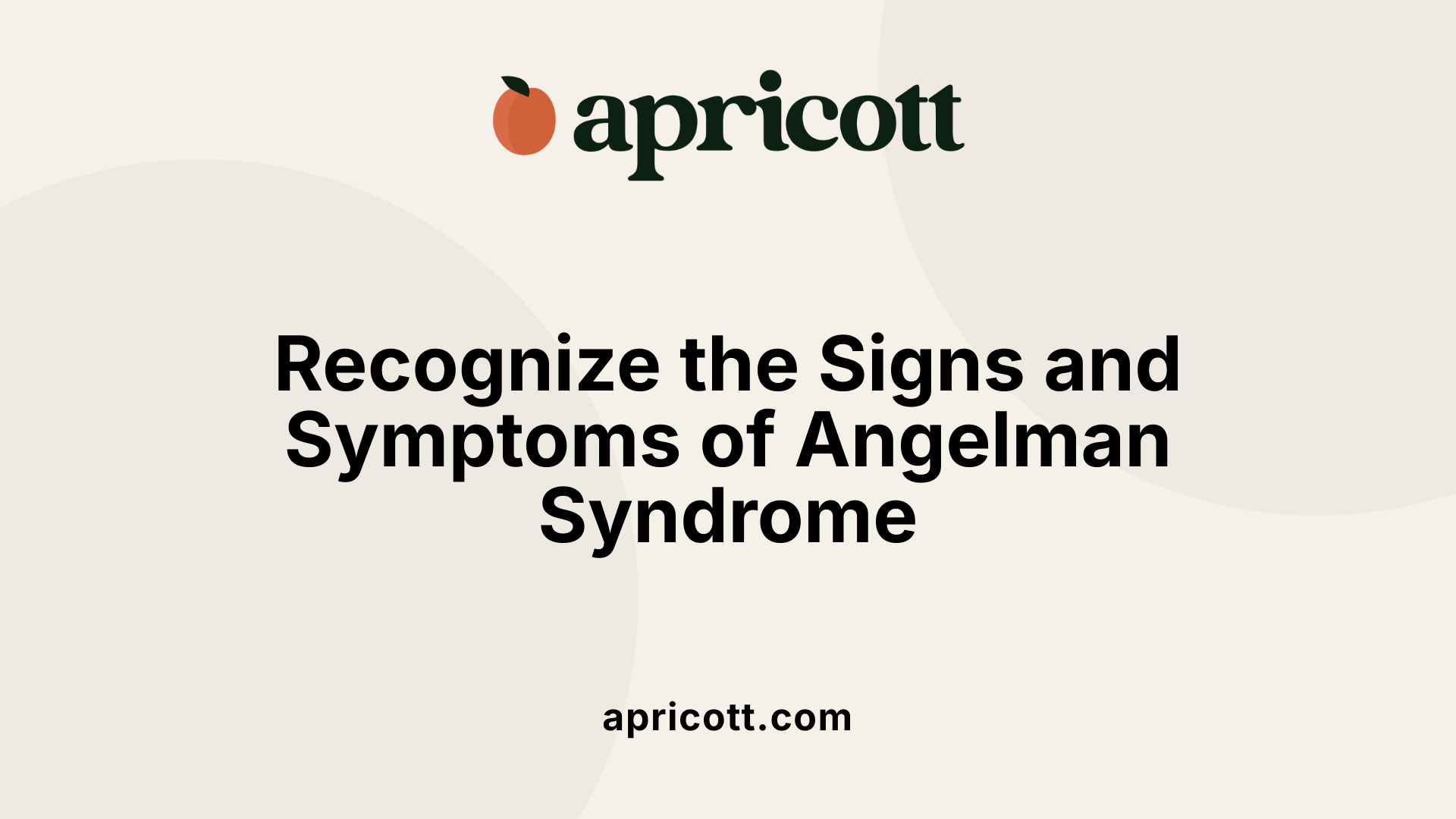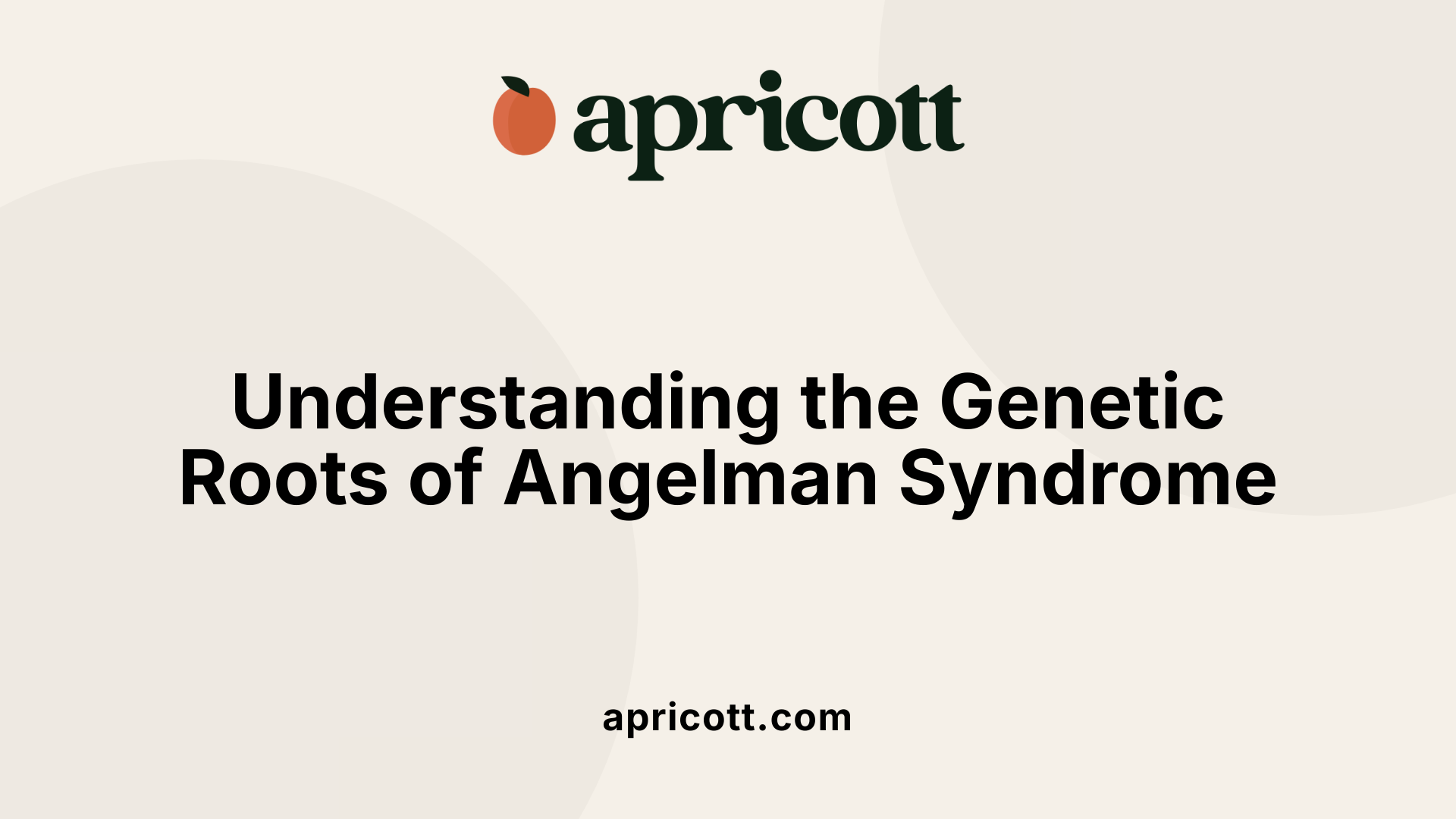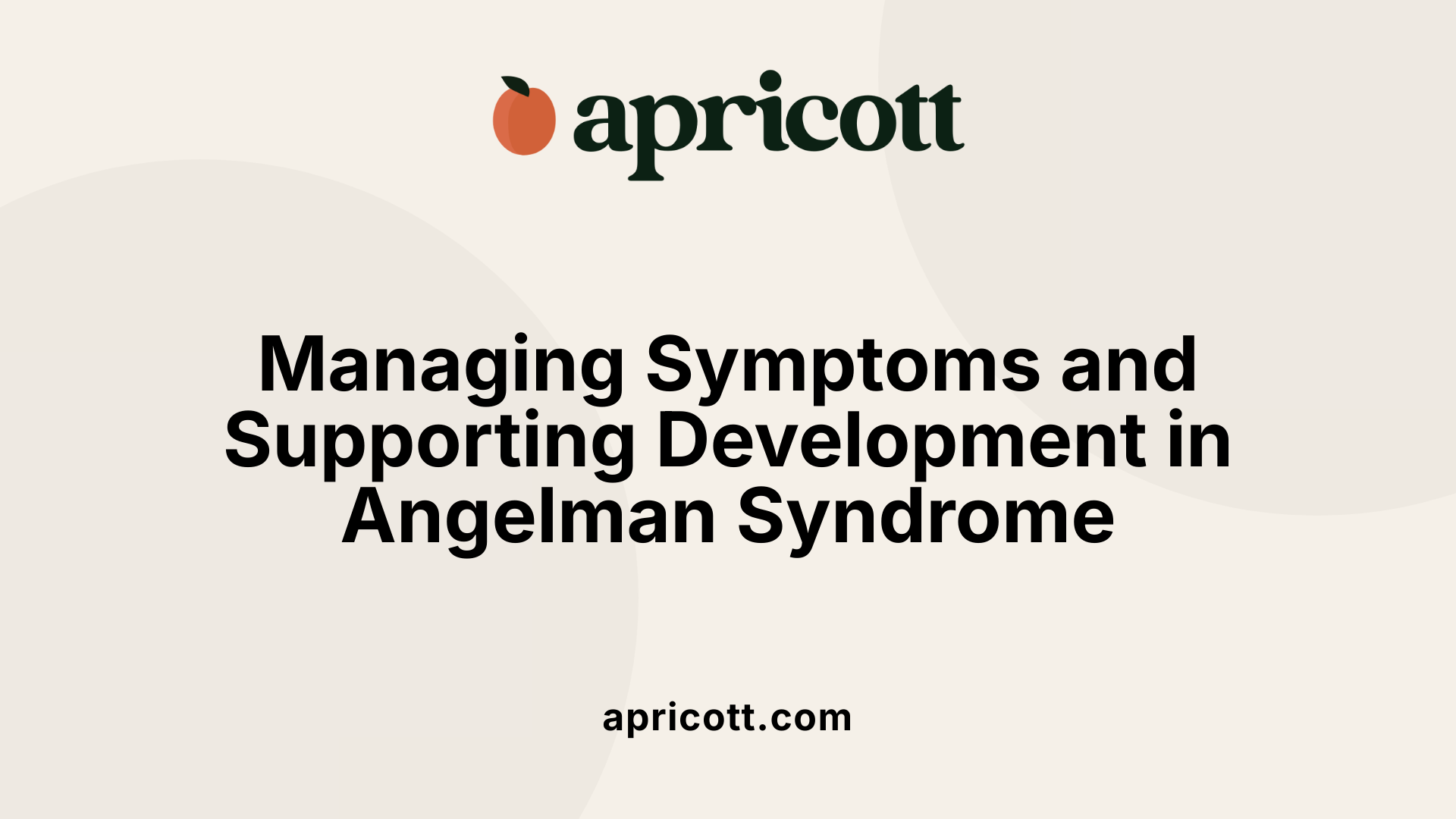A Deep Dive into Angelman Syndrome
Angelman Syndrome is a complex neurodevelopmental disorder that affects approximately 1 in 15,000 individuals worldwide. Characterized by developmental delays, speech impairment, distinctive physical features, and a happy demeanor, it presents unique challenges for affected individuals and their families. This article explores the causes, clinical features, diagnosis, management strategies, prognosis, and the promising landscape of current research aimed at improving lives and discovering a cure.
What is Angelman Syndrome and What Are Its Common Symptoms?

Definition of Angelman Syndrome
Angelman Syndrome (AS) is a rare neurodevelopmental disorder that affects approximately 1 in 15,000 people worldwide. It is caused by a genetic change that impairs the function of the UBE3A gene on chromosome 15. This gene plays a critical role in brain development and neural communication.
Most cases result from a deletion or mutation in the maternal copy of the gene, leading to a loss of its activity. Often, the syndrome occurs spontaneously, with most people not inheriting the gene change from their parents, although in some cases, it can be inherited.
Initial signs and symptoms in infancy
Symptoms usually become evident between 6 and 12 months of age. Infants may show developmental delays, such as difficulty supporting their head, delayed motor skills, and problems with sucking and feeding. These early signs often include hypotonia, or low muscle tone, which can cause poor head control and feeding challenges.
By around one year, children might not support sitting or crawling like their peers. Developmental milestones such as babbling or walking are often delayed or absent at this stage.
Behavioral characteristics
Children with Angelman Syndrome are often characterized by a happy and excitable disposition. They tend to smile, laugh frequently, and are often easy to amuse. Behaviors such as hand-flapping, jumping, and other repetitive motions are common.
Despite their intellectual and motor challenges, individuals are generally affectionate and may have a fascination with water or crinkly sounds. They often exhibit hyperactivity and may have a short attention span.
Sleep disturbances, including trouble falling asleep or fragmented sleep, are also common and can persist over time. These behavioral features can help in the early recognition and diagnosis of the syndrome.
Physical features
Physical signs of Angelman Syndrome include a small head size (microcephaly), a wide mouth with a prominent chin, and widely spaced teeth. They may have a distinct facial appearance with a offen smile, deep-set eyes, and sometimes strabismus (crossed eyes).
Other physical characteristics can include a large tongue, gait ataxia (unsteady walking), and difficulty with balance and coordination. Affected individuals may also develop scoliosis and experience growth delays.
While these physical features, combined with developmental and behavioral signs, suggest Angelman Syndrome, genetic testing is essential for confirmation.
| Aspect | Description | Additional Details |
|---|---|---|
| Onset | Usually between 6-12 months | Early signs include feeding problems and hypotonia |
| Behavior | Happy, excitable, frequent laughter | Hand-flapping, fascination with water |
| Physical features | Small head, wide mouth, facial expression | Large tongue, microcephaly, distinct facial features |
| Motor skills | Delayed walking, balance issues | Gait problems, ataxia |
| Seizures | Often begin between 2-3 years | Types include myoclonic, atonic, tonic-clonic |
Understanding these features can aid in early diagnosis and intervention, improving the quality of life for individuals affected by Angelman Syndrome.
Genetic Causes of Angelman Syndrome and How They Impact the Body

What causes Angelman Syndrome at the genetic level?
Angelman Syndrome (AS) is mainly caused by disruptions in the functioning of the UBE3A gene, which is located on chromosome 15q11-13. This gene plays a significant role in brain development and neural function. When the maternal copy of UBE3A is missing or damaged, it leads to the characteristic symptoms of AS.
Approximately 70-75% of cases are due to a deletion of a segment of the maternal chromosome 15 that contains the UBE3A gene. This deletion results in the absence of the gene’s expression in the brain, impairing neural communication and development. Another common cause includes mutations or variants within the maternal UBE3A gene itself, which hinder its normal function.
In addition, some cases involve imprinting center defects. These affect the activation and silencing of the gene, leading to inadequate UBE3A expression despite the gene being intact. Paternal uniparental disomy (UPD) also accounts for about 16% of cases, where an individual inherits both copies of chromosome 15 from the father, meaning the maternal copy—normally active in the brain—is missing or inactive.
These genetic mechanisms disrupt the normal expression and function of UBE3A, which is pivotal for neurotransmitter regulation and neuronal growth. When UBE3A isn't expressed properly, it results in the neurological symptoms associated with Angelman syndrome, such as developmental delays, seizures, and movement problems.
Role of the UBE3A gene
The UBE3A gene encodes an enzyme called ubiquitin-protein ligase, which tags unwanted or damaged proteins for degradation. Proper regulation of this process is crucial for maintaining healthy cell functions, particularly in the brain. In neurons, the UBE3A enzyme helps regulate synaptic development and plasticity, affecting learning and memory.
In individuals with AS, the deficiency of UBE3A leads to an accumulation of proteins that should be degraded, disrupting normal neuron function and growth. This biochemical imbalance manifests as cognitive impairments, motor problems, and behavioral traits characteristic of the syndrome.
Variability in genetic causes
Different genetic alterations can cause Angelman syndrome, and these variations influence the severity and specific features of the disorder. The main types include deletions, mutations, imprinting defects, and uniparental disomy.
- Deletions result in a complete loss of the gene segment, often associated with more severe developmental issues.
- Mutations within the UBE3A gene can range from small changes to larger segments and may lead to variable symptoms.
- Imprinting defects affect how the gene is expressed without damaging the gene itself, leading to subtler clinical differences.
- Paternal uniparental disomy involves inheriting two copies of chromosome 15 from the father, with the maternal gene being inactive or absent.
Most cases are sporadic, arising randomly during reproductive cell formation, with low recurrence risk. However, inherited mutations or imprinting defects can pose higher risks for subsequent offspring.
| Genetic Mechanism | Frequency in Cases | Impact on UBE3A Expression | Typical Severity | Chromosomal Detail |
|---|---|---|---|---|
| Maternal deletion | About 70-75% | Absent | Severe | Loss of segment 15q11-13 |
| Mutations in UBE3A | 10-20% | Dysfunctional protein | Variable | Genetic alteration within UBE3A |
| Imprinting defects | 4-5% | Silent copy | Mild to moderate | Epigenetic change |
| Paternal UPD | 15-20% | No maternal copy | Severe | Both copies from father |
Understanding these mechanisms helps in diagnosis, management, and genetic counseling for families affected by Angelman syndrome.
Diagnosis: How Clinicians Confirm Angelman Syndrome
How is Angelman Syndrome diagnosed?
Diagnosing Angelman syndrome involves a careful assessment of clinical symptoms supported by advanced genetic testing. Most diagnoses are made through a combination of physical features, developmental history, and molecular tests that identify genetic alterations.
Clinicians start with observing characteristics such as delayed development, speech impairment, happy demeanor, gait problems, microcephaly, and seizures. These signs prompt further investigation with genetic methods.
Molecular techniques are central to confirmation. DNA methylation analysis is often the first step, detecting about 80% of cases by revealing abnormal methylation patterns on the maternal chromosome 15, which is typical in Angelman syndrome.
If methylation results are normal, genetic testing of the UBE3A gene through sequencing can identify mutations that cause the disorder, covering approximately 11% of cases that methylation testing might miss.
Additional tests like fluorescence in situ hybridization (FISH), chromosomal microarray (CMA), and analysis for paternal uniparental disomy (UPD) help identify deletions or abnormal chromosome inheritance patterns associated with Angelman syndrome.
Electroencephalograms (EEGs) can also provide subtype clues by showing characteristic brain activity patterns, such as abnormal wave discharges, but they are not definitive alone.
Overall, the combination of clinical features and genetic testing provides a reliable diagnosis. Early identification allows for tailored therapies and better management of symptoms.
| Diagnostic Method | What It Detects | Significance |
|---|---|---|
| DNA methylation analysis | Methylation pattern abnormalities on chromosome 15 | Detects ~80% of cases, first-line screening method |
| UBE3A gene sequencing | Mutations within the UBE3A gene | Confirms diagnosis in about 11% of cases not caught by methylation |
| FISH / CMA | Deletions or duplications involving 15q11-q13 | Identifies structural chromosome abnormalities |
| UPD analysis | Paternal uniparental disomy of chromosome 15 | Detects UPD mechanism causing Angelman syndrome |
| EEG findings | Brain activity patterns | Provides supportive evidence, not confirmatory alone |
Relevant searches include "Diagnosing Angelman Syndrome," emphasizing the importance of a combined diagnostic approach.
Management and Treatment Strategies for Angelman Syndrome

What are the treatment options and management strategies for Angelman Syndrome?
Since there is currently no cure for Angelman Syndrome, treatment focuses on managing symptoms and helping individuals develop to their fullest potential.
Seizure control is vital, as up to 90% of individuals experience seizures often beginning around age two. Anticonvulsant medications like levetiracetam, sodium valproate, and clonazepam are commonly used to reduce seizure frequency and severity. Regular EEG monitoring guides treatment adjustments.
Sleep disturbances are frequent in children with Angelman Syndrome, with issues such as difficulty falling asleep, shorter sleep duration, and fragmented sleep. Strategies include good sleep hygiene, establishing consistent bedtime routines, and sometimes using melatonin supplements.
Supportive therapies play a crucial role. Physical therapy helps improve balance, strength, and mobility, addressing gait issues and ataxia. Speech therapy, often with augmentative and alternative communication tools like sign language or picture exchange systems, supports communication development. Occupational therapy aids in daily living skills and fine motor coordination.
Addressing feeding difficulties is important, especially in infants who may have trouble sucking or swallowing. Dietary modifications, specialized feeding equipment, and medications for reflux can help ensure proper nutrition.
Given the complexity of the syndrome, a team approach involving neurologists, therapists, dietitians, and other specialists ensures comprehensive care. Tailoring interventions to each individual optimizes their health, safety, and quality of life.
In addition, behavioral management strategies can help reduce hyperactivity and promote positive behaviors. Support organizations and clinics worldwide provide resources and guidance for families navigating care options.
While current treatments manage symptoms effectively, ongoing research aims to develop targeted therapies, including drugs that unsilence the paternal UBE3A gene, with the goal of addressing the underlying causes of Angelman Syndrome.
Prognosis and Lifelong Support for Individuals with Angelman Syndrome

What is the prognosis for individuals with Angelman Syndrome?
The outlook for individuals diagnosed with Angelman syndrome is generally positive, with many reaching a near-normal lifespan. Most individuals live well into adulthood, though their developmental and physical challenges often require ongoing support. Symptoms such as seizures, sleep issues, and hyperactivity tend to improve over time, but cognitive delays, speech impairments, and balance problems usually persist.
Early diagnosis plays a crucial role in managing the syndrome effectively. With consistent therapies—such as speech, physical, and occupational therapy—many individuals can see improvements in communication, mobility, and daily functioning. These interventions can also help reduce behavioral issues and enhance overall quality of life.
Developmental and health outcomes
Despite the persistent developmental delays, some individuals with Angelman syndrome can develop partial mobility and communication skills. This progress enables participation in daily activities and fosters independence to some extent.
Health complications like severe seizures, scoliosis, and obesity can impact health and safety. Regular medical management, personalized care plans, and supportive therapies are essential for maintaining health and preventing injury.
Role of early intervention
Timely intervention from infancy can make a significant difference. Therapies focused on development, communication, and movement foster skill-building and help maximize each person’s potential. Medication management for seizures and sleep disturbances also contributes to better health outcomes.
Furthermore, ongoing research and clinical trials are exploring new treatments, including drugs that aim to unsilence the paternal UBE3A gene, which could potentially improve developmental functions.
Potential for independence
While most individuals with Angelman syndrome will require lifelong support due to the severity of their challenges, some can achieve a degree of independence. This may include basic household tasks or participation in group living environments tailored for adults with special needs.
The continuous development of assistive technologies, therapeutic strategies, and support services enhances the outlook for independence and quality of life. Families, caregivers, and support organizations play an integral role in providing the necessary care and advocacy.
| Aspect | Typical Outlook | Influencing Factors | Support Strategies |
|---|---|---|---|
| Lifespan expectations | Nearly normal life expectancy | Seizure control, overall health | Regular medical care, preventive health measures |
| Developmental outcomes | Persistent delays, some skills may develop | Early intervention, therapy progress | Therapeutic interventions, communication aids |
| Health management | Risk of seizures, scoliosis, obesity | Medical management, physical activity | Ongoing medical support, lifestyle modifications |
| Independence potential | Partial independence possible for some individuals | Therapy progress, personal development | Assistive devices, skill training, supportive environment |
In summary, individuals with Angelman syndrome can enjoy a good quality of life, especially with early diagnosis and comprehensive ongoing support. Their long-term prognosis depends on personalized care, management of complications, and continual progress in research therapies.
Looking Forward in the Fight Against Angelman Syndrome
Ongoing research and clinical trials foster hope for improved treatments and potential cures for Angelman Syndrome. Advances in gene therapy and gene editing techniques such as CRISPR-CAS9 hold promise for addressing the underlying causes of the disorder. Meanwhile, multidisciplinary management, early intervention, and robust support networks remain vital in enhancing the quality of life for affected individuals. Raising awareness and fostering global research collaborations continue to be crucial steps toward understanding this complex disorder, making future breakthroughs increasingly possible.
.svg)
.svg)








